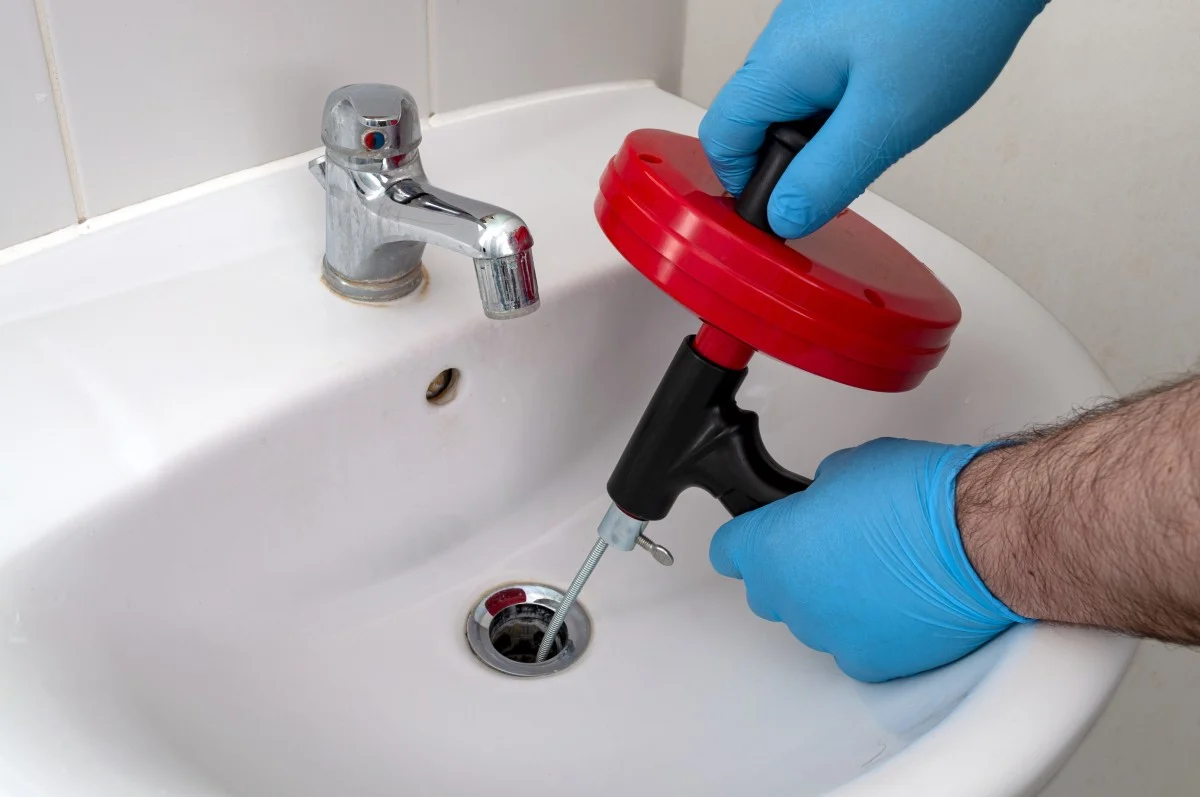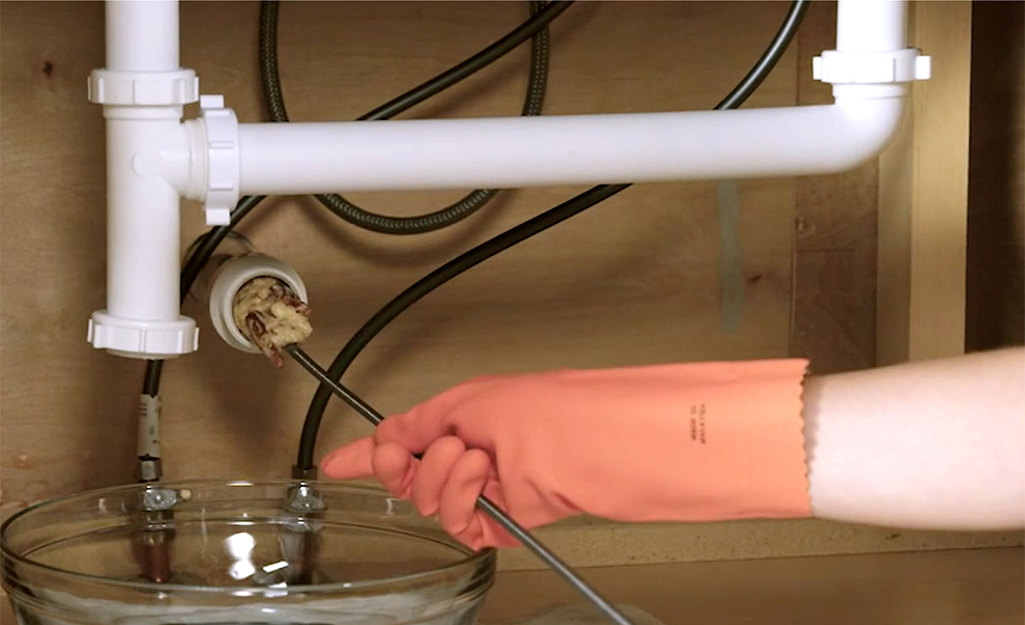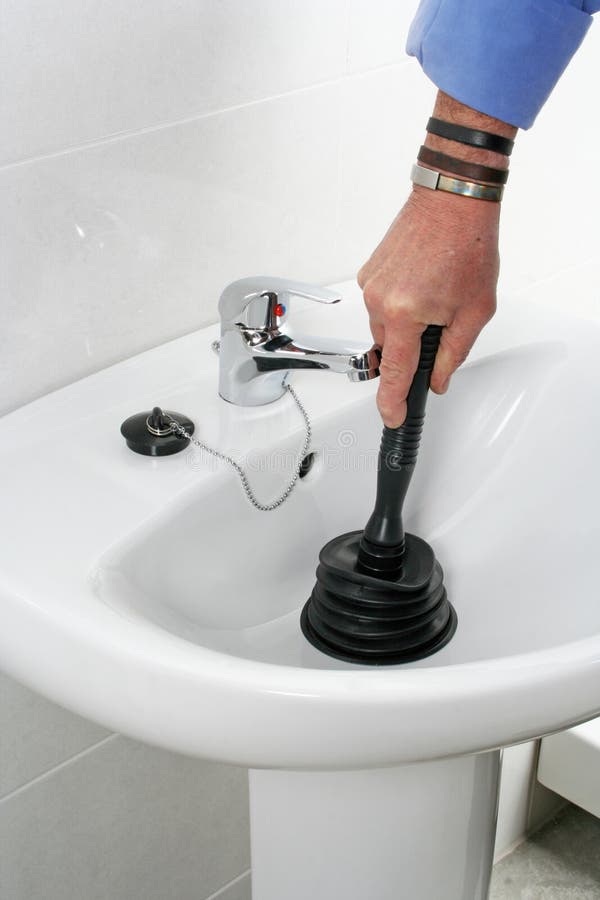Why Do Bathroom Sinks Get Clogged in Walls?
Bathroom sinks are essential fixtures in any home, providing convenience and functionality. However, when a bathroom sink becomes clogged, it can lead to frustration and inconvenience, especially if the clog is located behind the wall. Understanding why bathroom sinks get clogged in walls is crucial for effectively addressing the issue and preventing future occurrences.
- Build-up of Debris: One of the primary reasons why bathroom sinks get clogged in walls is the accumulation of debris over time. When we use the sink for activities like shaving, brushing our teeth, or washing our face, small particles of soap, hair, toothpaste, and other materials can accumulate and eventually form a clog. These particles can make their way through the drain and become trapped in the plumbing pipes behind the wall.
- Faulty Installation: Another common cause of clogged bathroom sinks in walls is faulty installation. If the plumbing pipes are not installed correctly or if there are any defects in the pipes themselves, it can lead to improper drainage and eventual clogging. Poor installation can also result in the pipes becoming misaligned or damaged over time, further contributing to clogs.
- Hard Water Build-up: Hard water contains high levels of minerals like calcium and magnesium, which can accumulate in plumbing pipes over time. As these minerals build up, they can create blockages in the pipes, leading to clogs in the bathroom sink located behind the wall. Regular maintenance and cleaning of the pipes can help prevent hard water build-up and reduce the risk of clogs.
- Foreign Objects: Sometimes, objects like jewelry, hairpins, small toys, or even toiletry items can accidentally fall into the bathroom sink drain and become lodged in the plumbing pipes behind the wall. These foreign objects can obstruct the flow of water and contribute to clogs. It’s essential to be mindful of what goes down the sink drain to prevent such incidents.
- Tree Roots: In some cases, tree roots from nearby trees or shrubs can infiltrate the underground plumbing pipes connected to the bathroom sink, causing blockages and clogs. This is more common in older homes with aging pipes or properties with extensive landscaping. Regular inspection of the plumbing system and addressing any issues promptly can help mitigate the risk of tree root intrusion.

Signs of a Clogged Bathroom Sink Behind the Wall
A clogged bathroom sink hidden behind the wall can be a nuisance, causing inconvenience and potentially leading to more significant plumbing issues if left unaddressed. Recognizing the signs of a clogged sink behind the wall is crucial for homeowners to take prompt action and prevent further damage to their plumbing system.
Slow Drainage: One of the most common signs of a clogged bathroom sink behind the wall is slow drainage. If you notice that water is taking longer than usual to drain from the sink, it could indicate a partial clog in the plumbing pipes. This slow drainage may worsen over time if the clog is not addressed promptly, eventually leading to a complete blockage.
Gurgling Noises: Another telltale sign of a clogged bathroom sink behind the wall is gurgling noises coming from the drain. These noises occur when air is trapped in the plumbing pipes due to the presence of a clog, causing bubbles to form as water tries to pass through. If you hear gurgling noises when using the sink or flushing the toilet, it could indicate a clog in the shared drainage system behind the wall.
Foul Odors: A clogged bathroom sink behind the wall can also emit foul odors due to trapped food particles, hair, soap scum, and other debris decomposing in the plumbing pipes. These odors may be more noticeable when running water or using the sink and can indicate a significant clog that requires immediate attention.
Water Backing Up: In severe cases of a clogged bathroom sink behind the wall, water may begin to back up into the sink or even overflow onto the floor. This is a clear indication of a complete blockage in the plumbing pipes and requires immediate action to prevent water damage to the surrounding area and further damage to the plumbing system.
Visible Water Stains or Damage: If you notice water stains or damage on the wall or ceiling near the bathroom sink, it could indicate a hidden plumbing leak caused by a clogged sink behind the wall. These stains may appear as discolored patches, peeling paint, or sagging drywall and should be inspected by a professional plumber to determine the underlying cause.
Tips and Tricks for Unclogging a Bathroom Sink Hidden in the Wall
Dealing with a clogged bathroom sink hidden behind the wall can be daunting, but there are several DIY solutions that homeowners can try before calling a professional plumber. From using simple household ingredients to employing specialized tools, here are some tips and tricks for unclogging a bathroom sink hidden in the wall.
Boiling Water: One of the most straightforward methods to unclog a bathroom sink is by pouring boiling water down the drain. Boiling water can help dissolve and dislodge minor clogs caused by soap scum, hair, and other debris. Simply boil a pot of water and carefully pour it down the drain in stages, allowing it to work its way through the pipes.
Baking Soda and Vinegar: A mixture of baking soda and vinegar can be an effective natural remedy for unclogging a bathroom sink. Start by pouring about half a cup of baking soda down the drain, followed by an equal amount of vinegar. The chemical reaction between the two ingredients can help break down organic matter and loosen stubborn clogs. Let the mixture sit in the drain for about 30 minutes before flushing it out with hot water.
Plunger: Using a plunger is a classic method for unclogging drains, including those hidden behind the wall. Make sure to use a cup plunger specifically designed for sinks, as it creates a tight seal around the drain opening. Fill the sink with enough water to cover the plunger, then position the plunger over the drain and pump it up and down vigorously several times. The suction created by the plunger can help dislodge the clog and restore proper drainage.
Wire Hanger: In some cases, a wire hanger can be used to manually remove hair and debris clogging the bathroom sink drain. Straighten out a wire coat hanger and create a small hook at one end. Carefully insert the hooked end into the drain and fish out any visible clogs, being mindful not to push the clog further into the pipes.
Plumbing Snake: For more stubborn clogs that cannot be removed with a plunger or wire hanger, a plumbing snake (also known as a drain auger) can be a handy tool. Feed the snake into the drain and crank the handle to navigate it through the pipes, breaking up and dislodging the clog along the way. Plumbing snakes are available for purchase at most hardware stores and can be a worthwhile investment for homeowners dealing with recurrent drain issues.
Chemical Drain Cleaners (Use with Caution): While chemical drain cleaners can be effective at dissolving clogs, they should be used with caution, especially in older plumbing systems or in homes with septic tanks. Chemical drain cleaners contain harsh ingredients that can damage pipes and pose health risks if not handled properly. If opting for a chemical drain cleaner, be sure to follow the manufacturer’s instructions carefully and use appropriate safety precautions.
When to Call a Plumber for a Clogged Sink in the Wall
While DIY solutions can often resolve minor clogs in a bathroom sink hidden behind the wall, there are instances where professional help may be necessary. Knowing when to call a plumber for a clogged sink in the wall can save homeowners time, money, and potential headaches associated with more complex plumbing issues.
Persistent Clogs: If DIY methods fail to clear the clog after repeated attempts, it may be time to call a plumber. Persistent clogs that resist conventional unclogging techniques may indicate a more significant underlying issue, such as a severe blockage or damaged plumbing pipes. A professional plumber will have the expertise and specialized tools to diagnose and address the problem effectively.
Foul Odors or Sewage Smells: Persistent foul odors emanating from the bathroom sink drain or sewage smells in the vicinity of the sink may indicate a serious plumbing issue that requires professional attention. These odors could be a sign of a sewer line blockage, damaged pipes, or a malfunctioning vent stack. A plumber can conduct a thorough inspection of the plumbing system to identify and resolve the source of the odor.
Visible Water Damage: If you notice water stains, mold growth, or other signs of water damage on the wall, ceiling, or floor near the bathroom sink, it’s crucial to call a plumber immediately. Visible water damage may indicate a hidden plumbing leak caused by a clogged sink behind the wall. Ignoring the issue can lead to further damage to the property and potential health hazards from mold growth.
Lack of DIY Experience: For homeowners with limited plumbing experience or unfamiliarity with the inner workings of a bathroom sink hidden behind the wall, attempting DIY repairs can be risky. Mishandling plumbing fixtures or using incorrect tools and techniques can exacerbate the problem and potentially cause more damage. In such cases, it’s best to leave the job to a professional plumber who has the necessary expertise and equipment to handle the issue safely and effectively.
Preventive Maintenance: In addition to addressing existing clogs, homeowners can benefit from scheduling regular preventive maintenance with a professional plumber to keep their plumbing system in optimal condition. A plumber can perform inspections, cleanings, and minor repairs to prevent clogs and other plumbing issues from occurring in the future, saving homeowners time, money, and hassle in the long run.
How to Avoid Future Clogs in Wall-Mounted Bathroom Sinks
Preventing clogs in wall-mounted bathroom sinks is key to maintaining proper drainage and avoiding costly plumbing repairs. By implementing simple preventive measures and practicing regular maintenance, homeowners can minimize the risk of clogs and keep their bathroom sinks running smoothly.
Use a Sink Strainer: Installing a sink strainer over the drain can help prevent hair, soap scum, toothpaste, and other debris from entering the plumbing pipes and causing clogs. Sink strainers are inexpensive and easy to install, and they can effectively catch large particles before they have a chance to accumulate in the drain.
Avoid Pouring Grease and Oil: Pouring grease, cooking oil, or fat down the bathroom sink drain can lead to clogs over time, as these substances solidify and congeal inside the pipes. Instead, dispose of grease and oil in a separate container and discard them in the trash or recycle them as appropriate. This simple practice can help prevent clogs and extend the lifespan of the plumbing system.
Regular Cleaning: Regularly cleaning the bathroom sink, including the drain and overflow holes, can help prevent the buildup of soap scum, toothpaste, and other residues that contribute to clogs. Use a mild abrasive cleaner or a mixture of baking soda and vinegar to scrub the sink and flush the drain with hot water to remove any loosened debris.
Flush with Hot Water: Periodically flushing the bathroom sink drain with hot water can help dissolve and dislodge minor clogs before they become a problem. Boil a kettle of water and carefully pour it down the drain in stages, allowing it to flush out any accumulated debris and restore proper drainage.
Schedule Professional Inspections: Regular inspections by a professional plumber can help identify and address any potential issues with the plumbing system before they escalate into major problems. A plumber can inspect the pipes, check for leaks or signs of damage, and recommend preventive measures to keep the bathroom sink clog-free.
Be Mindful of What Goes Down the Drain: Lastly, being mindful of what goes down the bathroom sink drain can go a long way in preventing clogs. Avoid rinsing large food particles, coffee grounds, eggshells, and other solid materials down the drain, as they can accumulate and cause blockages over time. Dispose of these items in the trash or compost bin instead.
Ways to Unclog a Slow Running Bathroom Sink Drain
Four Reasons Your Bathroom Sink is Clogging Mike Diamond
Clear A Sink Clogged Past The Trap In Minutes Our Recipes
Methods To Unclog A Bathroom Sink Paschal Air
How to Unclog a Kitchen Sink
How to Unclog a Bathroom Sink – Easily Fix Common Clogs
What a Drain Plunger Is and How to Use It
Galvanized Piping or No Vent Causing Clogged Drains/Black Ooze
How to Unclog a Bathroom Sink
Related Posts:
- Bathroom Sink With Towel Bar
- Bathroom Sink Vent Clogged
- Unclog Bathroom Sink Baking Soda Vinegar
- Bathroom Sink Odor Eliminator
- 2 Tap Bathroom Sinks
- Cost To Install New Bathroom Sink
- Bathroom Sink Revit Family
- Best Bathroom Sink Brands
- American Standard Cadet Bathroom Sink
- How To Fix A Leaky Bathroom Sink Faucet Single Handle












